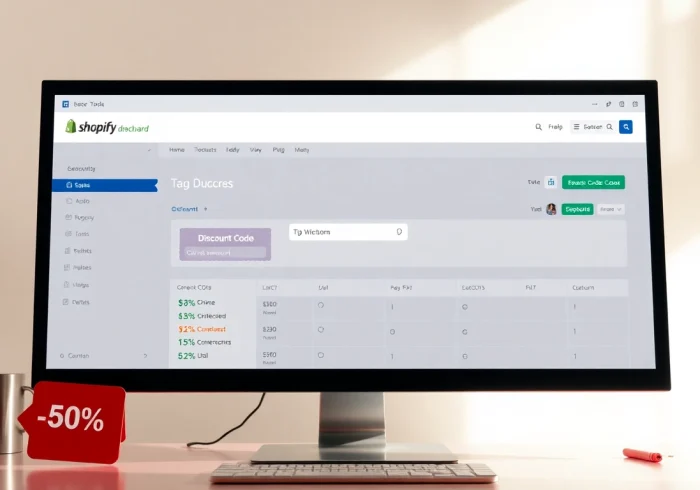Introduction to Air Hoses and Fittings
Air hoses and fittings are essential components in the operation of pneumatic tools, compressors, and various other devices that rely on compressed air. Selecting the right air hoses and fittings is crucial to ensure that your tools operate efficiently and reliably. Whether you’re a professional contractor, a DIY enthusiast, or simply someone looking to maintain a workshop, understanding the various types and their applications will empower you to make informed purchasing decisions. This guide delves into everything you need to know about air hoses and fittings, ensuring you’re equipped with the knowledge to navigate this essential component of your toolkits.
Understanding Different Types of Air Hoses
Air hoses are designed to transport compressed air from a compressor to a tool. They come in various materials and constructions, each suited to specific applications. The most common types of air hoses include:
- Rubber Air Hoses: Known for their flexibility and durability, rubber hoses are ideal for work environments where they may be exposed to various conditions.
- Polyurethane Air Hoses: These hoses are lightweight, flexible, and kink-resistant, making them excellent for portable tools and applications that require mobility.
- PVC Air Hoses: Affordable and resistant to abrasion, PVC hoses are suitable for light-duty applications. However, they may not perform well in extreme temperatures.
- Hybrid Air Hoses: Combining the best features of rubber and PVC, hybrid hoses offer flexibility, durability, and resistance to temperature changes, making them versatile for multiple applications.
The Importance of Quality Fittings
Fittings are critical connectors within the air hose system. A poor-quality fitting can lead to leaks, reduced efficiency, and potentially even damage to your tools or equipment. Key types of fittings include:
- Couplers: Allow for quick connections and disconnections, making it easy to switch tools without hassle.
- Plugs: Used to connect hoses to compressor outlets or tools.
- Adapters: Essential when different sizes or types of fittings need to connect.
- Quick Connect Fittings: These are designed for quick tool changes, enhancing efficiency in work environments.
Applications of Air Hoses in Various Industries
Air hoses and fittings are utilized across numerous industries:
- Automotive Repairs: Essential for running pneumatic tools such as impact wrenches and spray guns.
- Construction: Used in nailers, drills, and other pneumatic machinery.
- Manufacturing: Play a role in powering assembly line tools and machinery.
- HVAC: Used with tools that require compressor air for installation and maintenance.
Choosing the Right Air Hose Material
Selecting the correct material for your air hose greatly impacts performance, longevity, and usability. Each material has its benefits and limitations, and understanding these can help you find the right solution for your needs.
Rubber vs. Polyurethane: Pros and Cons
Rubber and polyurethane hoses are the most common options. Here’s how they compare:
- Rubber:
- Pros: Highly durable, flexible, withstands high temperatures and pressures.
- Cons: Heavier and can be more expensive than some alternatives.
- Polyurethane:
- Pros: Lightweight, good abrasion resistance, remains flexible in cold temperatures.
- Cons: Slightly less durable compared to rubber; prone to kinking.
Performance in Extreme Temperatures
Temperature extremes can significantly affect hose performance. Rubber hoses typically handle higher temperatures better than PVC ones, which can lose flexibility and become brittle when cold. Conversely, polyurethane maintains its flexibility at lower temperatures, making it a preferred option in colder environments where rubber may crack.
Longevity and Durability Considerations
The durability of air hoses directly correlates with their longevity. Rubber hoses, due to their resilient nature, often last longer under strenuous conditions but can succumb to wear if exposed to ozone or UV light without protective measures. Polyurethane hoses generally offer good performance but can wear out more quickly if continually exposed to harsh environments. Regular inspections and proper storage will help prolong their lifespan.
Understanding Air Hose Fittings
Air hose fittings are integral to the proper operation of air hoses. Knowing the types and how to use them can prevent issues like leaks or tool damage.
Types of Air Hose Fittings Explained
The main types of air hose fittings include:
- NPT (National Pipe Thread): The most common threading type used in pneumatic systems; they are tapered to create a tighter seal.
- Barb Fittings: Used to connect hoses, these fittings create a secure connection by using barbs to grip inside the hose.
- Swivel Fittings: Allow for flexibility in movement by preventing hose twisting.
- Quick Disconnects: Enable ease of hose connection without leaks, allowing for fast tool changes.
How to Select the Right Fitting Size
Choosing the right fitting size is crucial. A common rule of thumb is to measure the outside diameter of the male threads. The size will often be indicated as a nominal size; for example, a fitting designated as 1/4” refers to the inner diameter it should accommodate. If you’re dealing with quick disconnects, ensure to verify the nominal body size rather than simply measuring the attachment end.
Common Problems with Air Fittings and Solutions
Some common issues that can arise with air fittings include leaks, poor connection quality, and fitting wear. Here are solutions to these problems:
- Leaking Fittings: Often caused by improper tightening or wear. Ensure fittings are correctly tightened and replace worn parts.
- Poor Connection Quality: Check for debris or damage in the fittings. Cleaning or replacing poorly functioning fittings can resolve issues.
- Wear and Tear: Regularly inspect fittings for signs of wear. Replace as necessary to ensure efficient tool performance.
Installation and Maintenance of Air Hoses and Fittings
Proper installation and routine maintenance of air hoses and fittings will enhance their performance and longevity.
Step-by-Step Installation Guide
Installing air hoses and fittings involves several key steps:
- Choose the correct type of air hose and fittings as per your requirement.
- Cut the hose to the desired length using a hose cutter to ensure a clean cut.
- Attach the fitting securely to one end of the hose. Use a hose clamp if necessary to prevent slipping.
- Repeat the process for the opposite end, ensuring both ends are secure before use.
- Test the system by turning on the air compressor and checking for leaks before starting any work.
Tips for Routine Maintenance
To maintain your air hoses and fittings, consider the following:
- Inspect hoses regularly for signs of wear, nicks, or abrasions.
- Check fittings for leaks and tighten if necessary.
- Store hoses properly to avoid kinks, twists, or unnecessary wear.
- Clean fittings regularly to remove debris that could impact functionality.
- Replace any damaged parts promptly to prevent further issues.
Signs Your Hoses and Fittings Need Replacement
Recognizing when to replace air hoses and fittings is vital. Pay attention to the following signs:
- Visible cracks or frays in the hose material.
- Frequent leaks occurring from fittings.
- Reduced air pressure or performance of attached tools.
- Hose kinks that do not straighten out.
Where to Buy High-Quality Air Hoses and Fittings
Finding reliable suppliers for air hoses and fittings is essential for ensuring quality and performance.
Top Online Retailers for Air Products
Several reputable online retailers offer a range of air hoses and fittings, including:
- Steelman Tools
- JACO Superior Products
- Factory Direct Hose
- Portland Compressor
How to Identify Reliable Suppliers
When looking for reputable suppliers, consider the following:
- Check for reviews and customer testimonials.
- Ensure they specialize in pneumatic equipment to guarantee industry knowledge.
- Inquire about warranties or return policies should products fail to meet expectations.
Customer Reviews and Product Ratings to Consider
Always review customer feedback and ratings on products before making a purchase. High ratings and positive reviews can indicate reliability and satisfaction among users, giving you confidence in your decision.



